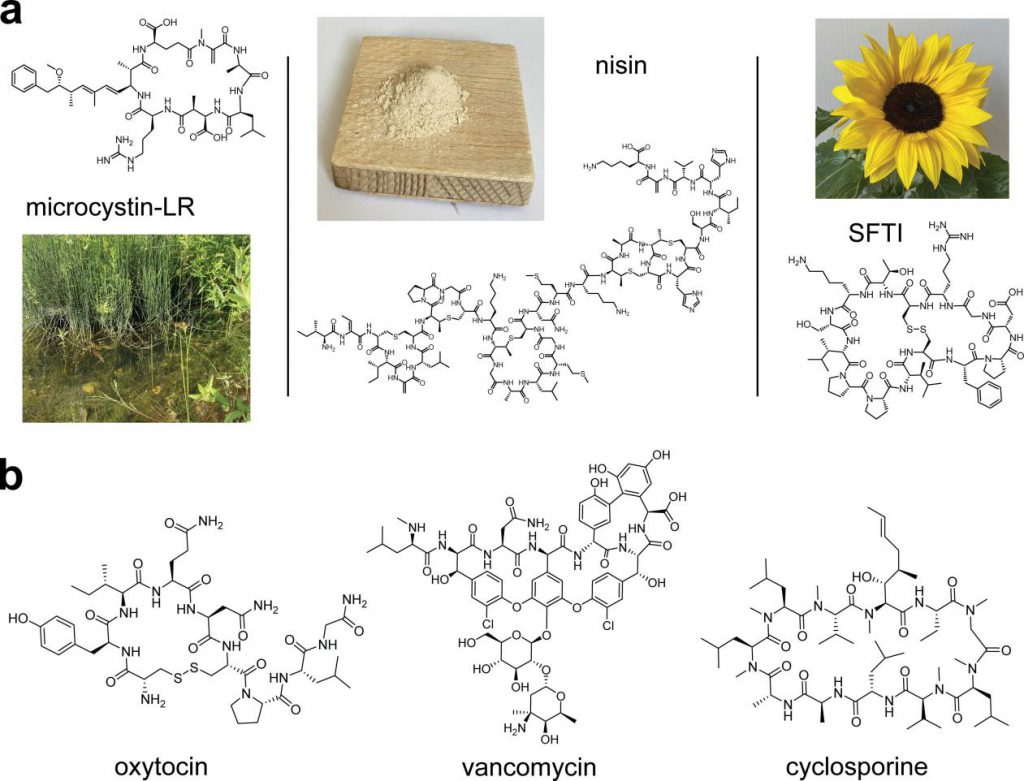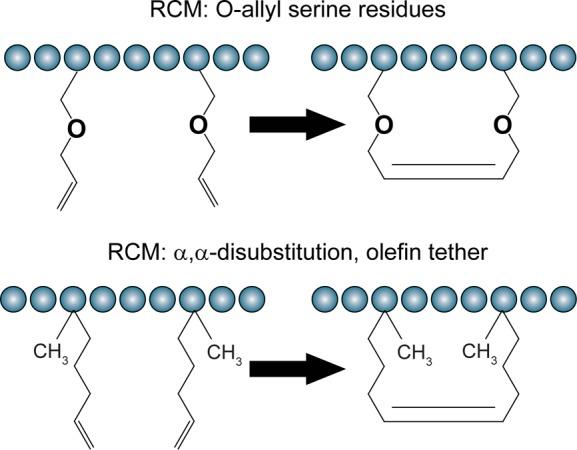Compared to linear peptides, cyclic peptides exhibit excellent biocompatibility and chemical diversity, making them effective in overcoming limitations and playing a crucial role in new drug development. In recent years, there have been significant advances in cyclic peptide synthesis strategies and their applications in drug development.
Protein-protein interactions (PPI) play a crucial role in various biological processes, and the misregulation of PPI is often associated with the onset of diseases. Peptides, especially linear peptides, face limitations such as susceptibility to proteolytic degradation and poor membrane permeability in practical applications. Therefore, modifications of peptides are often necessary. Peptide modifications can be categorized into N-terminal modification, C-terminal modification, side-chain modification, backbone modification, and cyclization. Among them, peptide cyclization is a common and effective way to enhance peptide stability and binding affinity.
Many natural cyclic peptides or their derivatives are used in clinic therapeutics. For instance, romidepsin, a bicyclic peptide extracted from Chromobacterium violaceum, inhibits histone deacetylase and is clinically used as an anti-tumor drug for treating T-cell lymphoma. Sunflower trypsin inhibitor (SFTI) is the bicyclic peptide that found in seeds of sunflower. Voclosporin, a large cyclic peptide derived from cyclosporin, was approved in 2021 for the treatment of lupus nephritis (LN). Pasireotide, an analog of somatostatin, is used clinically to treat Cushing’s disease when surgery is ineffective.
Cyclic Peptides with Amide Bonds
Initially, researchers used natural amino acids like lysine (Lys), glutamic acid (Glu), or aspartic acid (Asp) residues to form intramolecular amide bonds for cyclic peptide synthesis. The Fmoc/t-butyl solid-phase synthesis method is commonly used today. In this method, the lysine side-chain amino group is protected by allyloxycarbonyl (Alloc), and the carboxyl group of Glu or Asp side chains is protected. After synthesizing the linear peptide chain through solid-phase synthesis, the protecting groups are removed using metal Pd, and the cyclization is performed using coupling agents such as PyBOP. A drawback of this method is the use of heavy metals like Pd during deprotection, which can be harsh.
Cyclic Peptides with Cysteine Residues
Utilizing cysteine residues to form intramolecular disulfide bonds is a common strategy for constructing large cyclic peptides. Various methods, such as air oxidation, iodine oxidation, potassium ferricyanide oxidation, dimethyl sulfoxide oxidation, and thallium trifluoroacetate oxidation, are employed to protect the thiol groups of cysteine residues when two or more disulfide bonds are present, using protective groups such as trityl (Trt), monomethoxytrityl (Mmt), acetylamidoethyl (Acm), t-butyl (t-Bu), benzyl (Bzl), or p-methoxybenzyl (Tmob) for thiol protection. When constructing cyclic peptides via disulfide bonds, an appropriate linker is required to enhance the affinity and membrane permeability of the cyclic peptide.
Stapled Peptides
Stapled peptides involve cross-linking the side chains of any two amino acids in a peptide or cross-linking one amino acid side chain to the end of the peptide, forming a stable α-helix or β-fold conformation, primarily referring to α-helical peptides supported by olefinic or alkyne linkers. Since α-helices constitute 30% to 40% of ordered proteins and play a crucial role in the binding of many important biological receptor proteins, stapled peptides with α-helices exhibit higher target affinity, stronger cell penetration, and resistance to proteolytic degradation. The synthesis strategy for stapled peptides involves introducing non-natural amino acids with α-methyl or α-alkene into the solid-phase peptide chain and then cyclizing through ring-closing metathesis (RCM). In RCM reactions, non-natural amino acids are usually inserted at positions i, i+3, i+4, or i+7 in the peptide sequence.
Bicyclic Peptides
Naturally occurring cyclic peptides generally consist of no more than 10 amino acids, resulting in relatively small molecular masses. Such peptides are less susceptible to proteolytic degradation in the body, but they are poorly absorbed orally. On the other hand, cyclic peptides with more than 10 amino acids, although more structurally diverse and stable than linear peptides, still lack sufficient stability in vivo. To address the issue of poor stability of large cyclic peptides in vivo, researchers have turned to synthesizing bicyclic peptides. Compared to monocyclic peptides, bicyclic peptides have a more rigid structure, and with proper design, one ring is responsible for binding to cell surface proteins, providing them with targeting properties. The other ring, after the entire molecule is transported into the cell, binds to the target protein, exhibiting inhibitory activity.
Plecanatide is a peptide with a structure almost identical to human uroguanylin, consisting of 16 amino acids. Plecanatide, through two pairs of disulfide bonds, exhibits an active conformation at physiological pH 5.0 in the proximal duodenum and jejunum, binding to guanylate cyclase C (GC-C) receptors. It acts as a guanylate cyclase receptor agonist, promoting the excretion of urinary sodium, regulating acid-base ions in the gastrointestinal tract, inducing fluid transport into the gastrointestinal tract, and increasing gastrointestinal motility. Plecanatide is suitable for treating chronic idiopathic constipation in adults.
Conclusion and Prospects
The trend in peptide drug development has shifted from naturally isolated cyclic peptides to optimized cyclic peptide analogs to enhance peptide efficacy, stability, and pharmacokinetic properties. The application of cyclic peptides has also expanded to various areas, including disease treatment, drug targeting, imaging, and diagnostics. Current research on cyclic peptides still focuses on stability, and their drug-like properties require further investigation. Rational drug design could be based on specific disease targets, focusing on the binding sites of key amino acids. Subsequently, through biological activity evaluations, cyclic peptides with optimal drug-like properties may be discovered.
References:
- Ji, X., et al., Cyclic Peptides for Drug Development, Angew Chem. Int. Ed., 2023.
- Walensky, L. D., and Bird, G. H., Hydrocarbon-Stapled Peptides: Principles, Practice, and Progress, J Med Chem., 2014, 57(15): 6275-6288.

